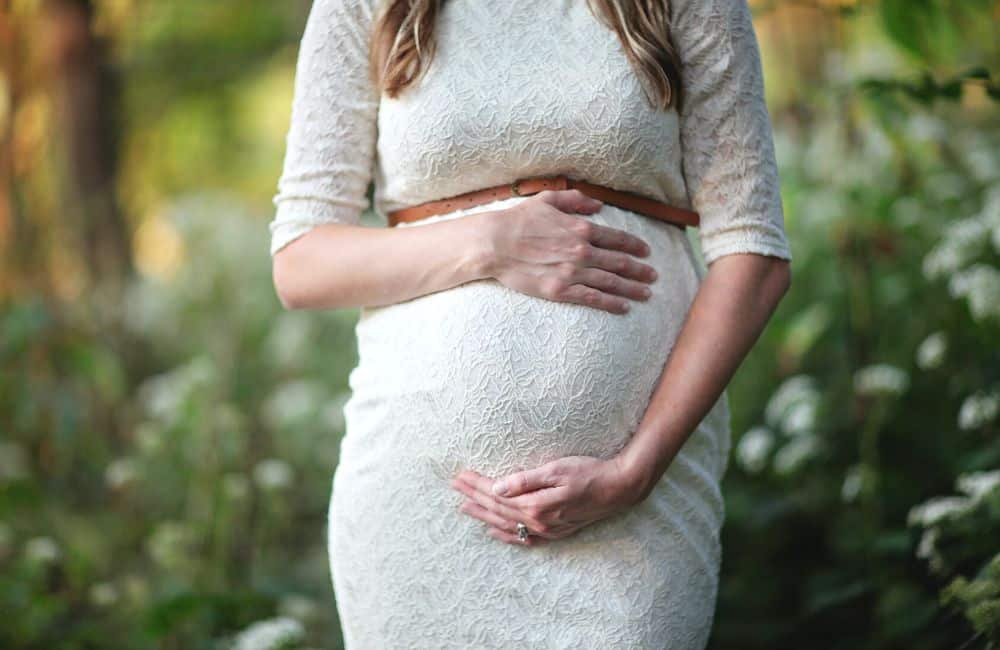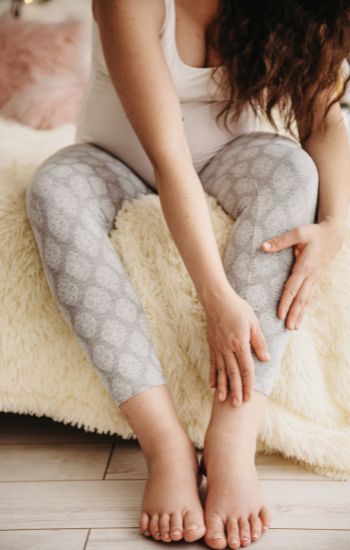Pregnancy is a very exciting time that comes with many changes to a woman’s body. There are a number of pregnancy related foot complaints which are often overlooked because of everything else going on during pregnancy. Let’s take a quick look at some common foot problems during pregnancy.

Natural Changes
A woman’s centre of gravity shifts forward during pregnancy due to natural weight gain and her growing abdomen. This results in a change of force through the bones and joints in the lower limb when walking and standing. This is further complicated by the release of hormones which relax (loosen) the ligaments to prepare the body for childbirth. This causes increased pressure and instability throughout the lower limbs.
Common foot problems during pregnancy
Swelling of the feet and flattening of the arches are some of the most common problems seen by a podiatrist during pregnancy. These problems can lead to pain at the heel, arch, and the ball-of-foot. Many women may also experience leg cramping, varicose veins and pain from sciatica that shoots down the legs as a result of these conditions. It is important for mums-to-be to seek help and take these symptoms seriously as they can make walking difficult, uncomfortable or even painful.
Flat Feet/ Dropped Arches
Dropped arches can create extreme stress on the soft tissues and muscles in the feet and legs. Most commonly this affects the plantar fascia, a fibrous band connecting the heel to the forefoot. Stress to the plantar fasciitis leads to inflammation of plantar fasciitis being a frequent condition in pregnant women.
Other areas of the feet, the calves, the shins and even up to the muscles of the back can also be affected due to flattening feet. As the natural weight gain occurs the forces on these areas can increase and so can the symptoms as you progress through your trimesters.

Swelling
Swelling, often referred to as oedema, naturally occurs in the later stages of pregnancy. Fluid pools in the feet or legs due to the enlargement of the uterus putting pressure on the blood vessels in the pelvis. This slows down the blood flow returning from the feet. When a woman’s feet are swollen they can go up multiple shoe sizes, change colour to a purplish or even brown appearance with the legs feeling tight as the fluid increases pressure on the structures of the lower body. This can result in aches and pains throughout the lower limb.
Nail care
During the later stages of pregnancy routine nail and foot care becomes difficult. The ability to reach your feet can be lost, so cutting nails, or smoothing callus can be very tough. Swollen toes can also predispose you to ingrown nails. Your podiatrist can assist with this.
Treatment & Prevention of foot problems during pregnancy
All these issues can be managed to help you walk comfortably.
Management of your flat feet can start with the use of good, supportive shoes with in-built arch support. Some women may require custom foot orthoses if the in-built supports aren’t sufficient in relieving their symptoms. Custom orthoses are designed with the correct level of arch support and heel postings for your foot.
See your podiatrist to assist with foot care in later stages of pregnancy if you need help.
If seen early enough during pregnancy, your podiatrist can help prevent other conditions such as plantar fasciitis and the wide variety of other foot and leg conditions associated with flat feet.
Minimise swelling in the feet by:
- Try to elevate your feet as often as possible to help the blood flow back to the heart from the feet.
- Make sure you are wearing well fitted, wide shoes to allow for changes in swelling throughout the day
- Check your foot size multiple times throughout pregnancy as feet can change up to 2 sizes – they may stay at the new size!
- Wear socks that do not have seams to prevent blood vessel constriction.
- Take regular breaks while driving to move the legs and prevent fluid pooling.
- Regular exercise. Walking is the best exercise and helps promote your overall health.
- Keep hydrated! Drink plenty of water this will help the body to retain less water.
- Diet! Have a well-balanced diet making sure to not have too much salt as this will promote fluid retention.
If the amount of swelling is not similar between both legs it could be a sign of a vascular problem and you should see your doctor as soon as possible.
Still concerned about experiencing any leg and foot problems during pregnancy?
The best thing to do if you have any worries is to seek out an appointment with your podiatrist. Our team all have the skills and experience to help you with any issue or discomfort you may be experiencing.

